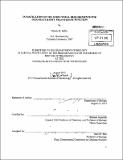| dc.contributor.advisor | Barbara Imperiali. | en_US |
| dc.contributor.author | Jaffee, Marcie B. (Marcie Beth) | en_US |
| dc.contributor.other | Massachusetts Institute of Technology. Department of Biology. | en_US |
| dc.date.accessioned | 2014-01-09T19:53:08Z | |
| dc.date.available | 2014-01-09T19:53:08Z | |
| dc.date.issued | 2013 | en_US |
| dc.identifier.uri | http://hdl.handle.net/1721.1/83769 | |
| dc.description | Thesis (Ph. D.)--Massachusetts Institute of Technology, Dept. of Biology, September 2013. | en_US |
| dc.description | Cataloged from PDF version of thesis. "August 2013." Vita. | en_US |
| dc.description | Includes bibliographical references. | en_US |
| dc.description.abstract | N-linked glycosylation is a ubiquitous protein modification involved in a wide range of cellular functions and diseases (Varki, 1993). The oligosaccharyl transferase (OTase), the principle enzyme responsible for catalysis of N-linked glycosylation, facilitates the transfer of a preassembled oligosaccharide from a polyprenyl-lipid donor to the side-chain nitrogen of asparagine acceptors. In a majority of eukaryotes the OTase is a multimeric, membrane-bound complex, which has precluded detailed structural and mechanistic studies. The discovery of a homologous bacterial N-linked glycosylation system in 1999 provided new opportunities to study the fundamental biosynthetic and mechanistic components of the process. Specifically, the bacterial OTase, PglB, is monomeric and homologous to the catalytic subunit of the eukaryotic OTase. The following chapters describe studies designed to learn about the OTase transfer reaction using PglB as a model. Optimization of expression and purification of PglB is first described, as initial expression of PglB in E. coli showed poor yields and instability upon purification. Bioinformatic analysis was performed to define sequence regions of functional importance and to ascertain the extent of homology between PgIB and other OTases, which verified the value of Pg1B studies for understanding OTases generally. The bioinformatics analysis was based on topology predictions for PglB and various homologs. The general conservation in OTase membrane configuration was used to structurally guide and simplify sequence analyses for a large number of diverse OTases. The method revealed highly conserved motifs within the soluble loops appearing between transmembrane domains and biochemical analysis was carried out to establish the functional importance of these domains. These results were published concurrently with an independently determined X-ray crystal structure of PgIB, which validated and complemented the bioinformatic and biochemical results. Subsequently, a sensitive luminescent assay was designed and developed as a way to investigate the dynamics of substrate binding and conformational changes in the OTase reaction. Initial results demonstrate the informative value of the system. Measurements using this system will be continued by Imperiali lab members. | en_US |
| dc.description.statementofresponsibility | by Marcie B. Jaffee. | en_US |
| dc.format.extent | 221 pages | en_US |
| dc.language.iso | eng | en_US |
| dc.publisher | Massachusetts Institute of Technology | en_US |
| dc.rights | M.I.T. theses are protected by
copyright. They may be viewed from this source for any purpose, but
reproduction or distribution in any format is prohibited without written
permission. See provided URL for inquiries about permission. | en_US |
| dc.rights.uri | http://dspace.mit.edu/handle/1721.1/7582 | en_US |
| dc.subject | Biology. | en_US |
| dc.title | Investigation of the structure requirements for oligosaccharyl transferase function | en_US |
| dc.type | Thesis | en_US |
| dc.description.degree | Ph.D. | en_US |
| dc.contributor.department | Massachusetts Institute of Technology. Department of Biology | |
| dc.identifier.oclc | 864891692 | en_US |
